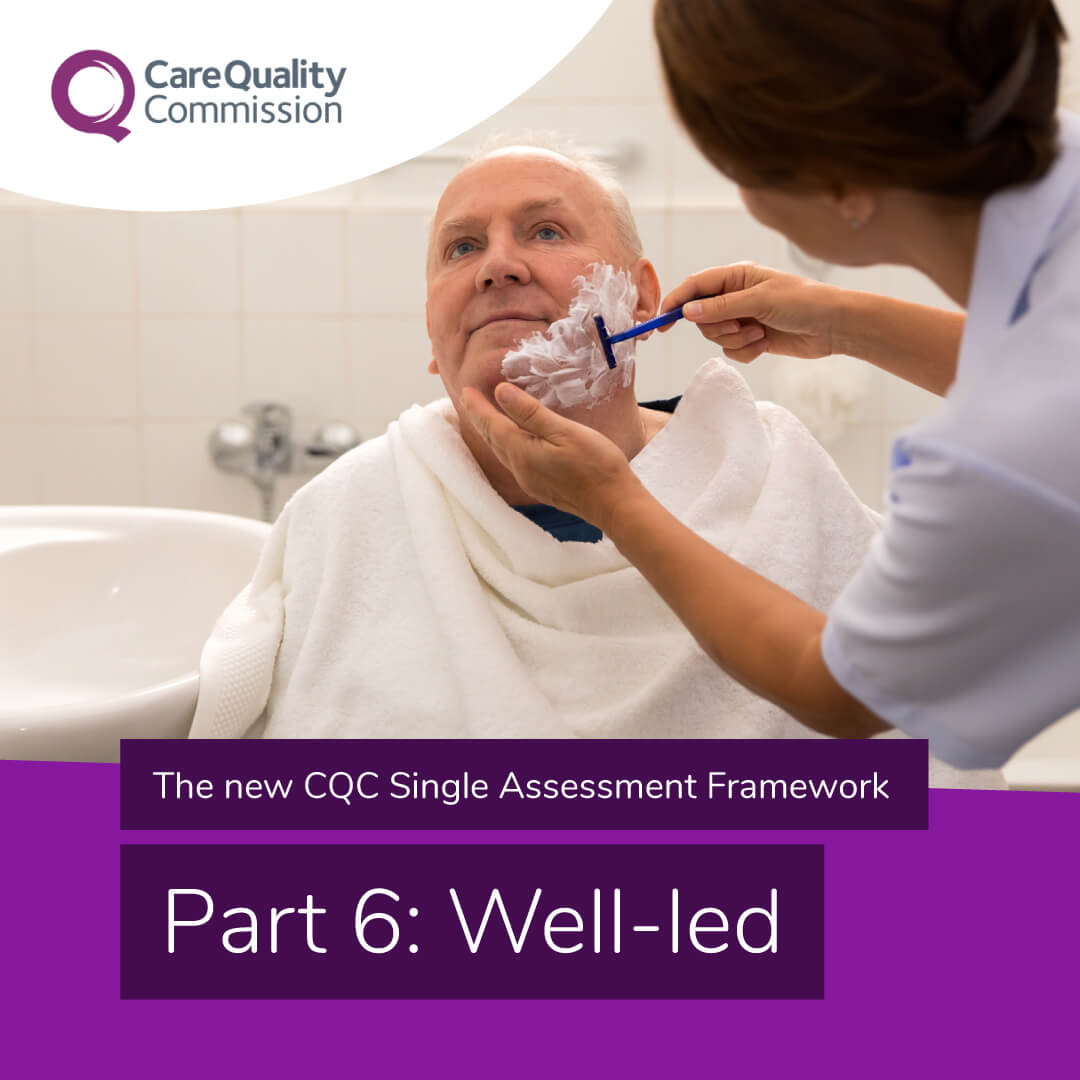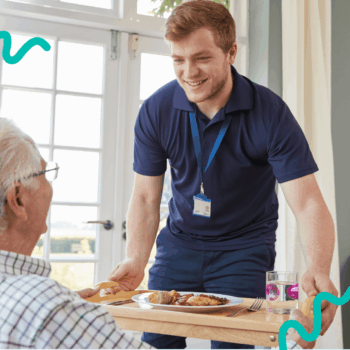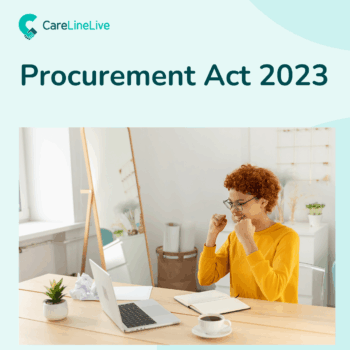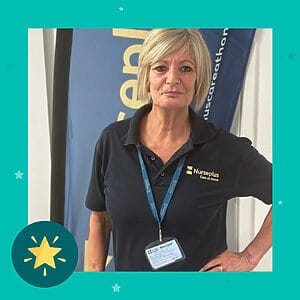Our previous articles on the Single Assessment Framework
- Webinar recording: Single Assessment Framework (May 2024)
- The new CQC Single Assessment Framework. What we know so far. (Feb 2023)
- Care Quality Commission and moving forward with the Single Assessment Framework
- Single Assessment Framework – Are you transition ready?
- Single Assessment Framework – What does SAFE look like?
- Single Assessment Framework – What does EFFECTIVE look like?
- Single Assessment Framework – What does RESPONSIVE look like?
- Single Assessment Framework – What does CARING look like?
- Launch of the CQC new provider portal
What does a WELL-LED service look like?
A well-led service requires qualified, experienced and competent leaders who are connected to the service at every level. Inclusivity and a proactive approach is key to a service being effective and well-led. It is crucial to have robust processes in place that monitor the service and provide data for analysis. The information received will help leaders to develop innovative strategies to support best practice across the workforce. People working within services will be empowered to deliver care that is integrated and of the highest quality.
Good governance
Good governance should see providers working in partnership with people using and working within services. Providers will work to shape the service to meet the needs of the wider community. Collaborative working and integrated care will be pivotal in reducing inequality in meeting the needs of people accessing services. An embedded culture of continuous learning and improvement will be underpinned by processes that closely track all aspects of the service and highlight areas requiring improvement.
Strategic planning is key
The challenges faced by home care providers are many but can be resolved by strategic planning around efficiency and staff education. Carefully thought-out business continuity planning will allow the smooth running of the business when things go wrong e.g. adverse weather conditions. Thinking outside the box within staff engagement is key to the workforce understanding the objectives of the service.
Environmental and business sustainability
Services are expected to actively work to protect the planet, they need to show an understanding of environmental change and making services more sustainable. Home care providers can step up to the challenge by creating a sustainability strategy which can certainly impact on productivity and operational reputation. A culture of sustainability should be naturally be embedded into the culture of the service.
Efficiency is fundamental to business and environmental sustainability and making adjustments to process and training can positively impact on both. E.g. using technology across the service to facilitate better time and resource management as well as making the working environment more energy efficient and adhering to local policy regarding waste disposal and recycling. Training people working within services to be environmentally friendly and extending this to ensure that staff working in the community are doing everything they can when in people’s homes to work sustainably is a must.
Technology
Efficiency is fundamental to business and environmental sustainability. Transitioning from paper-based processes to sector-specific software positively impacts every aspect of a service. Technology facilitates capacity planning, recruitment, training, staff management, care planning, monitoring, auditing, and communication. Providers without technology will be left behind, unable to access records or utilise digital social care records. Technology helps identify changing needs and areas of concern in real time. Software generates valuable data for insights into health and well-being. Some software allows service users to access and share data with stakeholders. See CareLineLive’s Care Circle Portal feature.
Quality statements for the key question of well-led
CQC guidance on each quality statement and relevant regulations is clear. It is therefore straightforward to relate them to your service. The quality statements that relate to the key question of well-led are:
- Shared direction and culture
- Capable compassionate and inclusive leaders
- Freedom to speak up
- Workforce equality, diversity and inclusion
- Governance, management and sustainability
- Partnership and communities
- Learning improvement and innovation
- Environmental sustainability – sustainable development
Generating evidence
The CareLineLive management portal, care circle and mobile app provides numerous opportunities to evidence good governance and a Well-Led service. Users can provide evidence including; rostering and visit data, capacity planning, carer task completions, carer, client and stakeholders communications, excellent care planning, risk management and management of incidents and concerns.
Let’s look at the types of evidence that can be provided to meet the quality statements of Well-Led.
Please be aware that numerous types of evidence an be provided and this is very specific to your own service, below are some suggestions.
Shared direction and culture
We have a shared vision, strategy and culture. This is based on transparency, equity, equality and human rights, diversity and inclusion, engagement, and understanding challenges and the needs of people and our communities in order to meet these.
Evidence suggestions:
- Strategic planning and key objectives for the service including how these are being implemented
- Evidence of feedback gained across the service and how this has facilitated embedding a shared direction and culture of learning and service improvement
- Examples of staff engagement and understanding of the culture of the service, its vision and strategy going forward
- Evidence of outcomes of community engagement and how this is benefiting people accessing services
- Domiciliary & Home Care Rostering Software | CareLineLive
Capable, compassionate and inclusive leaders
We have inclusive leaders at all levels who understand the context in which we deliver care, treatment and support and embody the culture and values of their workforce and organisation. They have the skills, knowledge, experience and credibility to lead effectively. They do so with integrity, openness and honesty.
Evidence suggestions:
- Examples of leaders actively engaging in with teams and promoting inclusivity and cohesiveness.
- Examples of leaders sharing their knowledge and experience
- Examples of bringing staff together and actively embedding a culture of service values which includes evidencing the promotion of a duty of candour when managing and resolving concerns, incident and complaints
- Promoting and sharing learnings across a variety of organisations
Freedom to speak up
We foster a positive culture where people feel that they can speak up and that their voice will be heard.
Evidence suggestions:
- Person-centred care planning which fosters dignity, respect and safeguarding
- Evidence of responding to, and learning from feedback across the service and making findings available.
- Whistleblowing policy and evidence of adhering to the policy, evidencing how this policy benefits people across the service
- Evidence of process for making complaints and how this information is shared with all stakeholders
See how CareLineLive’s Carer and Client Reviews feature can help with this.
Workforce equality, diversity and inclusion
We value diversity in our workforce. We work towards an inclusive and fair culture by improving equality and equity for people who work for us.
Evidence suggestions:
- Evidence of recruitment policies that ensure equal opportunities, equality, diversity and inclusion
- Evidence of meeting the needs of a diverse workforce
- Training reflecting the importance of equality, diversity and inclusion training
- Evidence of sharing information with the workforce to empower them to understand specific needs of people using services and the wider community
CareLineLive’s carer training and requirements functionality can help evidence this.
Governance, management and sustainability
We have clear responsibilities, roles, systems of accountability and good governance. We use these to manage and deliver good quality, sustainable care, treatment and support. We act on the best information about risk, performance and outcomes, and we share this securely with others when appropriate.
Evidence suggestions:
- Evidence of an staff understanding their roles and accountability within their roles. Including clear evidence of systems of accountability to manage risk and safety for people across the services.
- Evidence of understanding the process when making statutory notifications and supplying evidence of the processes linked to statutory notifications.
- Evidence of collaborative working and knowledge of local systems and processes
- Evidence of robust policies, processes and analytical reporting that are intrinsic in evaluating the service with a view to learning and improvement and business and environmental sustainability.
- Evidence of proactive care, treatment and support in responding to the changing needs of people using services. Including evidence of staff working together to achieve high quality care.
- Auditing and compliance systems which monitor performance
CareLineLive’s reports can help evidence this.
Partnerships and communities
We understand our duty to collaborate and work in partnership, so our services work seamlessly for people. We share information and learning with partners and collaborate for improvement.
Evidence suggestions:
- Evidence of a culture of collaborative working across the service showing positive outcomes for people using services
- Evidencing of robust processes around stakeholder communication
- Evidencing of process to receive and update partners with current and up-to-date information
- Evidence of actively collecting feedback and sharing of learning and related service improvements
You will need robust security and privacy systems in place to facilitate this aspect.
Learning, improvement and innovation
We focus on continuous learning, innovation and improvement across our organisation and the local system. We encourage creative ways of delivering equality of experience, outcome and quality of life for people. We actively contribute to safe, effective practice and research.
Evidence suggestions:
- Evidence knowledge of workforce and community engagement which focuses on equality of experiences across the service. Additionally there will be evidence of diversity and inclusion strategies and actively sharing and using this knowledge across the service
- Evidence of supporting people using service to achieve positive outcomes through creative, innovative ways of working. This could include the ‘About me@ assessment which will give definitive information of what’s important to people when they are accessing services
- Case studies of understanding the challenges that communities face which facilitates learning and service improvement
- Evidence of feedback gained across the service and how this has facilitated embedding a shared direction and culture of learning and service improvement
- Examples of shared vision and working collaboratively to develop processes to allow the implementation of identified goals across the service
Environmental sustainability – sustainable development
We understand any negative impact of our activities on the environment and we strive to make a positive contribution in reducing it and support people to do the same.
Evidence suggestions:
- Use of technology across the service with a view to being completely paperless
- Evidencing knowledge and innovative policy development reflective of local policy and service type
- Evidence of specific staff training and staff knowledge that reflects business and environmental sustainability related to their roles
- Evidence of working collaboratively with people using services to promote environmental sustainability
The key question of WELL-LED and the related quality statements is a vast area which relates to every part of the service. Using technology is the most effective way of gathering data for analysis to evaluate your service. Our all-in-one software gives users numerous opportunities to generate this data which allows you more time to engage with people using your service. Take a look at the many features that CareLineLive offers.
Read the rest of our series on the Single Assessment Framework
You can find our previous articles on the New Single Assessment Framework in the links below:
- The new CQC Single Assessment Framework. What we know so far. (Feb 2023)
- Care Quality Commission and moving forward with the Single Assessment Framework
- Single Assessment Framework – Are you transition ready?
- Single Assessment Framework – What does SAFE look like?
- Single Assessment Framework – What does EFFECTIVE look like?
- Single Assessment Framework – What does RESPONSIVE look like?
- Single Assessment Framework – What does CARING look like?
- Launch of the CQC new provider portal




